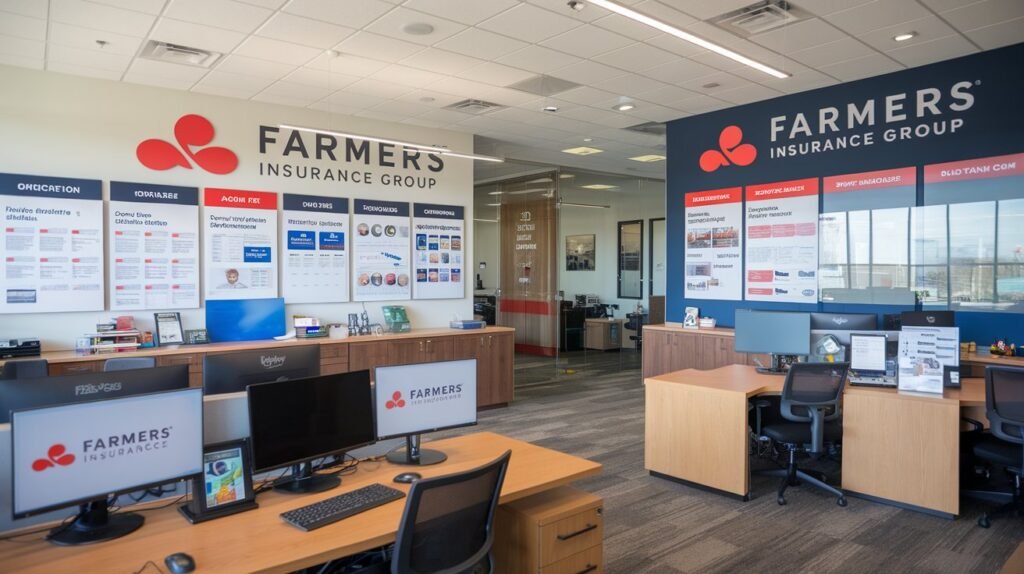Intro
Buying land is an endeavor that many seek after in the expectation of creating a gain. Right up to the present day, the contention of whether to put resources into private and business properties proceeds. This leaves many potential investors confused as to which side of the coin is the more profitable one. The purpose of this blog is to explain the main differences between residential and commercial real estate markets, their distinguishing characteristics and performance drivers, and tips for this type of real estate business.
Understanding the Basics of Property Investment
Property investment is primarily for the gain of financial resources. This goal is common to all investors, regardless of whether they focus on housing or workspace. Nevertheless, the strategy for investing in these two categories will likely be remarkably different.
In the habitational space, “Mom and Dad” investors generally get in which is considered the real good side. In contrast, commercial properties are appealing because of their expected higher returns, but at greater risk. It is most important to grasp the radically different nature of the inherent appraisal of these assets to make the right judgments.

Key Differences in Investment Evaluation
When analyzing residential and commercial real estate, different criteria have to be taken into consideration. Capital growth, rental yield, demand, and location are essential factors for investment for these two investment categories.
Lending Perspectives
Such differences in property-use psychology can range from lending considerations to siting schemes and city policies all of which produce different requirements for residential and commercial properties. For purchases involving a residence, an amount in the range of 20% of the property’s value plus stamp duty tends to be payable by the investors. By contrast, if the property being purchased falls under the category of commercial real estate, one may have to provide at least 25% – 40% considering the risk involved.
This difference in the initial investment makes some investors shy away from making inroads into the commercial real estate sector. But as more individuals are looking for options, more and more so-called “Mom and Dad” investors want to buy into commercial property, due to recent trends in the residential market.
Market Trends and Influences
The real estate market has a substantial effect on the decisions made concerning investments. Investment practices extend to nontraditional investments; rather, they look for a higher yield than regular residential investments.
The Appeal of Commercial Investment
It is often believed that the yield on investments in commercial properties is higher. On the one hand, such investments come with a high degree of risk, on the other hand, they are likely to yield a steady amount of income, especially in economically prosperous regions. People start to invest in such projects realizing the local economic conditions, how quickly the population is growing, and what type of commercial premises is in demand.
Types of Commercial Properties
The commercial property segment consists of many types of assets each possessing distinct features and opportunities for investment. Common types include:
- Retail: Includes shopping centers, standalone stores, and service stations.
- Office: Comprises buildings used for business purposes, ranging from small offices to high-rise towers.
- Industrial: Encompasses warehouses and manufacturing facilities, often located in strategic areas for distribution.
- Special Purpose: Properties like childcare centers, swimming pools, and other niche markets.
Investors frequently focus on less risky properties whenever they can and examples of such would include childcare centers which are characterized by low yield madaini7 are less risky and have an inherent demand and sales.

Who is Investing in Commercial Property?
The patterns of commercial property investors are varied. In contrast to dwelling investors who are mostly individuals or families, a wider range of active participants, including corporations and overseas investors can be seen in the commercial sector.
Self-employed people often look for commercial real estate investments that will allow them to run their businesses from the premises while concurrently investing in them. More and more, small business entrepreneurs are adopting such a two-pronged strategy.
Understanding Rental Yields
For investors, here lies an important figure which is the rental yield which shows the amount of rental income obtained from the property in terms of its worth. In most instances, the residential market has yields of 3.5% – 4.2%. On the other hand, the starting yields for commercial properties are around 4.2% and this can get higher based on the asset type and risks associated with it.
However, the higher yields associated with commercial real estate are in line with the risks taken since they include longer vacancy periods as opposed to residential properties. These factors must be taken into consideration by the investors in assessing the returns on the investment.
Financial Considerations: Deposits and Ongoing Costs
It is critical to know about the different monetary commitments that accompany each kind of venture. In the case of commercial real estate, deposits that can go as high as 40% are very common, and therefore gratefully affect the investor’s cash out. There are also running costs that highly vary for residential against commercial real estate.
Residential Costs
Usually in residential investments, the owner takes all the expenses such as maintenance of the property, utilities, and others, if any. Normally, these costs are offset by rental income, however the investor takes the risk of any losses.
Commercial Costs
In contrast, commercial quotes frequently knock the costs associated with the property on the head of the lessee. It can be rate bills, land taxes, pr, upkeep, and so forth with the investor’s attention simply on servicing the debt. These are the key issues affecting the investment, and mastery of the lease documents and tenancy obligations relates either to the operation or management practice.
Negative Gearing: A Different Approach
The practice of negative gearing is commonplace among residential property investors where they make losses to lessen income that is subject to taxation. Investors can engage in the same practice on commercial properties too although this happens to be the main reason why most of the investors are in commercial properties. Rather, in this case, commercial buyers look for income-generating properties.
Lease Agreements: Residential vs. Commercial
The lease contracts for the residential and commercial assets are bound to have differences of some kind or the other. In the case of residential leases, the period of commitment is usually shorter on the part of the tenants while in commercial leases these periods can stretch for years thus more security for the landlords.
Bargain shoppers need to analyze the business activity of the tenant and the lease terms before signing a commercial property. In case there are long-term vacant deals management can analyze the property about the tenant’s line of business.
The Future of Property Investment
There is great volatility in the property market with changes as a result of economic conditions, changing demographics, or government policy affecting their market trends. Occupationally constructed properties have had relatively good appeal among investors – however, the commercial real estate segment is receiving the attention of investors as well.
With the increase in interest rates, the changes in the activities of the two markets will persist. Investors must learn to be flexible and have the knowledge to make proper decisions for their future financial well-being.
Read More : Guide A Commercial Property Insurance in USA
Final Thoughts: Which Investment is Right for You?
In the end, investing in either residential or commercial property will depend on specific individual circumstances, risk preferences, and specifically financial considerations. Although residential property may be more well-known and thought of as less risky, the commercial property market may give greater returns as well as opportunities.
It also works to reach out to knowledgeable persons on the matter and critically look at one’s situation in terms of finances and forge an opinion. There are however a great number of ways in which one may invest in property and with appropriate strategies and information, it is possible to invest in accordance to the set targets.
Conclusion
In conclusion, regarding property investment, both residential and commercial real estate have their distinct advantages and drawbacks. The decision between the two depends on the investor’s preferred horizons, risk appetite, and market awareness. Residential property tends to be viewed as having a lower risk with steady but moderate returns, while commercial property has the capacity for investment returns that are higher but are associated with risk and complications. Understanding the market dynamics, financial aspects and the lease terms becomes imperative for the acquisition of properties to come up with optimal returns.
FAQs: Residential vs. Commercial Property Investment
Q. What are the key differences between residential and commercial real estate investments?
A. Putting resources into private properties is much of the time thought about as protected, with fair returns, drawing the consideration of numerous singular financial backers. Then again, business land offers conceivably significant returns; in any case, the dangers and the venture procedures are substantially more intricate.
Q. What factors should I consider when evaluating a property investment?
A. The primary factors include capital appreciation, income from rents, demand, location, and other characteristics, and finance such as the amount deposited and ongoing expenses. Residential and commercial properties have many valuation distinctions hence it is important to know the difference for profitable investments.
Q. Why do some investors prefer commercial real estate over residential?
A. Investors are magnetized to commercial real estate because it is likely to offer greater returns, have long-term contracts as well, and transfer some of the costs, such as tax and maintenance, to the tenants. However, this also comes with greater risks like longer periods of vacancy.
Q. How do rental yields differ between residential and commercial properties?
A. Residential properties usually give returns around 3.5% – 4.2% but in the case of rental Ask, Commercial properties have an inflection rate starting at 4.2% and can go beyond that depending on the asset class and the risk related to it.
Q. What ongoing costs are involved in commercial real estate compared to residential?
A. In residential investment, typically, maintenance and other expenses are paid by the owner. Whereas in commercial investment, many such expenses including rates, insurance, maintenance, etc. are usually borne by the tenant, thereby lowering the costs for the owner.
















